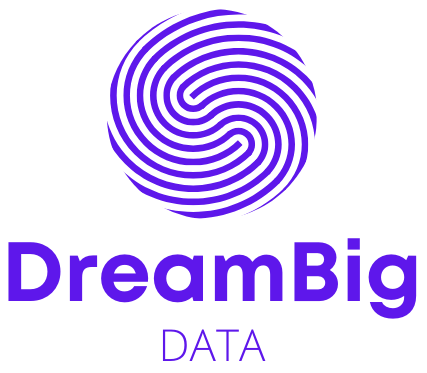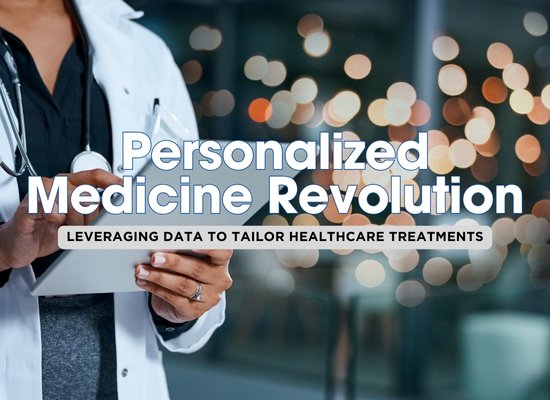In today’s fast-evolving healthcare landscape, one of the most significant advancements is the rise of personalized treatments powered by big data. With the ability to analyze vast amounts of health-related information, from genetic data to real-time monitoring, healthcare providers can now design more effective, individualized treatment plans. This not only leads to better health outcomes but also reduces unnecessary treatments and minimizes risks. Here are 10 groundbreaking ways big data is revolutionizing personalized healthcare treatments.
1️⃣ Precision Medicine: Tailoring Treatments Based on Genetics 🧬
Genetic information is one of the most powerful tools in personalizing healthcare treatments. By understanding a patient’s unique genetic makeup, healthcare providers can predict how they will respond to certain medications, therapies, or lifestyle changes. Big data allows for the analysis of complex genetic information from thousands of individuals, helping to build more accurate predictive models for personalized treatment plans.
- How It Works:
- Large-scale genomic sequencing data can reveal mutations and genetic predispositions that affect drug metabolism.
- By analyzing this data, healthcare providers can select treatments that are more likely to be effective for a specific patient, minimizing trial and error.
- Example:
A cancer patient’s genetic data can help doctors choose a targeted drug therapy that is more effective for their specific genetic mutations, rather than using a one-size-fits-all treatment.
2️⃣ Real-Time Health Monitoring: Tracking Patients 24/7 ⏱️
Wearable devices, health apps, and smart sensors are generating real-time data on a patient’s vital signs, physical activity, and even sleep patterns. Big data plays a crucial role in processing and analyzing this continuous stream of information, enabling healthcare providers to monitor patients remotely and adjust treatments as needed, without waiting for scheduled appointments. This constant flow of health data allows for more proactive and responsive healthcare.
- How It Works:
- Devices like fitness trackers, smartwatches, and connected medical devices track various health metrics like heart rate, blood pressure, glucose levels, and more.
- Big data platforms aggregate and analyze this data to provide actionable insights, allowing healthcare providers to adjust treatments or intervene early if there are signs of health deterioration.
- Example:
For a diabetic patient, a wearable device that continuously monitors blood sugar levels can send data to their healthcare provider. If their blood sugar spikes, the provider can immediately adjust the medication or suggest lifestyle changes before it becomes a more serious issue.
3️⃣ Predictive Analytics: Forecasting Health Risks Before They Happen 🔮
Predictive analytics, powered by big data, is revolutionizing how healthcare providers foresee potential health risks in their patients. By analyzing vast amounts of historical health data, medical records, and even environmental factors, predictive models can estimate the likelihood of a patient developing certain conditions in the future. This early insight allows for preventive treatments or lifestyle changes, significantly improving long-term health outcomes.
- How It Works:
- Big data algorithms analyze trends and patterns in patient histories to identify early warning signs of diseases such as diabetes, heart disease, or cancer.
- Predictive models can then suggest personalized preventative measures, such as lifestyle modifications, early screenings, or medications, to reduce the risk of these conditions developing.
- Example:
A predictive model might identify a patient at high risk for heart disease based on their family history, diet, and activity levels. The healthcare provider can intervene with personalized recommendations, such as a tailored fitness plan or medication, to reduce the risk of a heart attack or stroke.
4️⃣ Optimizing Drug Development: Faster, Safer, More Personalized 💊
Big data is transforming the drug development process, making it faster, more efficient, and highly tailored to the needs of individual patients. By analyzing large sets of patient data from clinical trials, previous drug treatments, and genetic profiles, researchers can accelerate the development of drugs that are more effective and have fewer side effects for specific patient groups.
- How It Works:
- Big data allows researchers to analyze clinical trial data on a large scale, identifying which populations will respond best to particular treatments.
- Genetic information and demographic data enable more precise targeting of drugs, reducing the chance of adverse reactions and increasing the likelihood of therapeutic success.
- Example:
A pharmaceutical company is developing a new cancer drug. By using big data to analyze previous trial data, patient genetics, and treatment histories, they can identify the subgroups most likely to benefit from the drug, significantly speeding up the approval process and improving treatment outcomes.
5️⃣ Personalized Treatment Plans: Optimizing Therapies for Individuals 📝
Big data allows healthcare providers to create highly individualized treatment plans by considering not only genetic factors but also lifestyle, medical history, and even environmental influences. These comprehensive data sets enable doctors to tailor their approach, optimizing therapies for the specific needs of each patient, which leads to higher treatment success rates and fewer adverse effects.
- How It Works:
- Data integration platforms collect information from diverse sources, including electronic health records (EHRs), genomic data, and lifestyle apps.
- Advanced algorithms help doctors analyze this wealth of data and create a personalized treatment strategy that accounts for the whole patient rather than just a set of symptoms.
- Example:
A patient with chronic asthma could have their treatment adjusted based on big data insights, considering not only their medical history but also factors like air quality, geographical location, and daily activity levels. The result is a personalized regimen that more effectively manages symptoms.
6️⃣ Enhancing Patient Engagement Through Data-Driven Feedback 📱
With the power of big data, healthcare providers can offer real-time, personalized feedback that motivates patients to stay engaged with their treatment plans. By integrating data from wearables, health apps, and other monitoring tools, patients receive continuous, actionable insights into their health, which can improve adherence to prescribed treatments and boost overall well-being.
- How It Works:
- Big data analytics collect and analyze patient behavior, such as exercise routines, diet choices, and medication adherence.
- Using these insights, healthcare providers send tailored recommendations or alerts to patients, encouraging them to stay on track with their treatment plans and make healthier choices.
- Example:
A diabetes patient using a health tracking app receives real-time feedback based on their blood sugar levels, activity, and diet. The app might suggest adjustments to their diet or remind them to take their medication, empowering the patient to manage their condition more effectively.
7️⃣ Improving Healthcare Access with Telemedicine and Big Data 🖥️
Big data is helping to break down geographical barriers in healthcare by enhancing telemedicine services. By integrating patient data from multiple sources and leveraging advanced analytics, healthcare providers can offer remote consultations, personalized care, and continuous monitoring, making healthcare more accessible, especially in underserved areas.
- How It Works:
- Big data aggregates data from telemedicine platforms, wearable devices, and mobile health apps to provide a comprehensive view of the patient’s condition.
- Healthcare providers can analyze this data in real-time during virtual consultations, adjusting treatments and offering advice based on accurate, up-to-date information.
- Example:
A patient in a rural area uses a telemedicine service to consult with a specialist in a major city. With the integration of big data, the specialist has access to the patient’s complete health profile and can make precise treatment recommendations, despite the physical distance.
8️⃣ Predicting Disease Outbreaks with Big Data 🦠
Big data plays a crucial role in identifying patterns that can predict disease outbreaks before they occur. By analyzing vast amounts of global health data, including historical disease patterns, environmental factors, and population density, big data models can provide early warnings to help prevent the spread of diseases.
- How It Works:
- Data from hospitals, clinics, health organizations, and even social media platforms are analyzed to detect trends that could indicate a potential outbreak.
- Machine learning algorithms identify patterns and provide predictive models that can help healthcare authorities prepare for and respond to potential public health threats.
- Example:
During an influenza season, big data can track rising cases in certain regions and predict the spread of the virus. Health officials can then allocate resources, distribute vaccines, and take preventive measures to reduce the impact of the outbreak.
9️⃣ Enhancing Clinical Trials with Big Data 🧪
Clinical trials are a crucial component of developing new treatments, but traditionally, these trials can be slow and expensive. Big data is transforming the process by enabling more precise patient recruitment, real-time monitoring, and better analysis of outcomes, ultimately speeding up the development of new, personalized therapies.
- How It Works:
- Big data helps identify the ideal candidates for clinical trials by analyzing genetic information, medical history, and lifestyle factors to match individuals to specific studies.
- During the trial, real-time data from patients’ health monitors, wearables, and genetic tests are analyzed to track progress and adjust treatments as necessary.
- Example:
A pharmaceutical company running a clinical trial for a new cancer drug uses big data to track how patients are responding to the treatment in real time. This allows them to make faster, more informed decisions about the drug’s effectiveness, accelerating the approval process.
🔟 Advancing Mental Health Treatments with Big Data 🧠
Big data is playing an increasingly vital role in mental health treatment by analyzing vast datasets to identify trends and patterns that influence mental well-being. With this data, healthcare providers can offer more personalized care for mental health conditions, such as depression, anxiety, and PTSD.
- How It Works:
- Data from electronic health records, social media, and wearable devices can be analyzed to detect early signs of mental health issues or to monitor patient progress.
- Predictive models based on big data help tailor interventions, allowing for real-time adjustments to treatment plans and therapies.
- Example:
A mental health clinic uses big data to monitor the effectiveness of different therapies for patients with depression. By analyzing data from wearable devices that track sleep patterns, physical activity, and heart rate variability, they can determine which treatment plans lead to the best outcomes for each patient.
Big data is driving unprecedented changes in personalized healthcare treatments, from predicting diseases and optimizing treatments to improving access and enhancing clinical trials. By leveraging this technology, healthcare providers can offer more precise, timely, and effective care, tailored specifically to the individual. As data collection and analysis tools continue to evolve, the future of personalized healthcare looks brighter than ever, providing HNW investors with opportunities to be at the forefront of this healthcare revolution.



